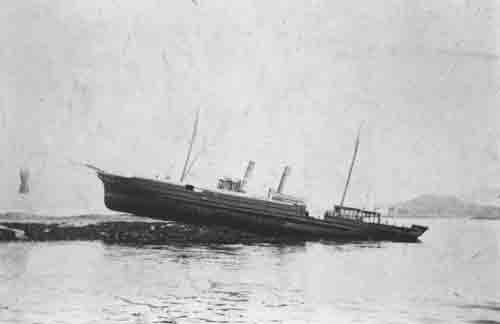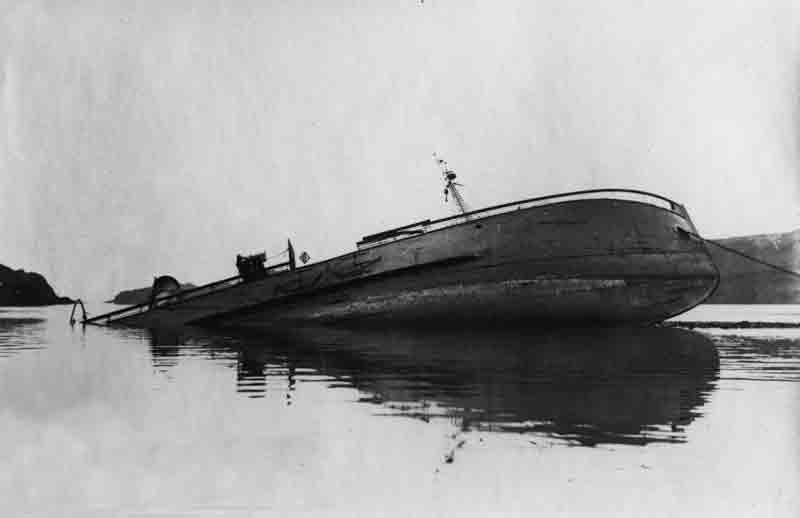Launched on the 21st July, 1864 to the order of Messrs G & J Burns of Glasgow, the Beagle, a small cargo passenger steamer, worked mainly between the ports of Belfast and Glasgow. She had been built by Messers Tod & McGregor at their Meadowside Yard in Partick (Yard No.130), and had hull dimensions of 185.5′ x 26.2′ x 14.0′ Advertised to sail from Glasgow on Tuesdays and Fridays and from Belfast on Mondays and Thursdays, she could offer a return trip with first class cabin for 30 shillings.
It was on this service that, on 8th November, 1865 inward bound, she collided with Messrs Handyside & Henderson’s steamer Napoli off Skate Point, Great Cumbrae and sank shortly afterwards. The Napoli struck the Beagle on her port side, twelve feet aft of her forecastle, slicing through her hull and decking to the foredeck hatch. The large open fore hold of the Beagle quickly filled with water as the vessels separated. The crew of the Beagle, in all states of dress as some had been asleep, were rescued by a passing tug, the Pearl, which had been inshore of the Beagle when the collision occurred. Everyone aboard was saved but the Beagle quickly sank, some nine minutes later. The Napoli sustained damage to her stem and bow plating and returned to Greenock under her own steam. She was towed to Glasgow the following day for repairs.
The wreck of the Beagle lies in a general depth of 34 – 38 metres, on an even keel, oriented 170°/350°, with stern pointing north. The open hull has a shallowest depth of 30-32 metres, dependent on the state of the tide. She is marked on Admiralty charts in position 55°47.296’N, 004°56.636’W.
The straight stem rises 4.5 metres out of the sand, silt seabed covered with orange and white plumose anemone. On top of the forecastle the main anchor and the bow steam winch are visible. Heading aft the fore hold area is a profusion of silt covered debris. On the port side the huge tear of the collision damage is clearly visible. All decking and support beams have collapsed into this area from above. At the rear of the fore hold is the engine room forward bulkhead and the diver has to ascend to the main deck level to continue aft.
Just forward of the net shrouded boiler stack would have been the wheelhouse area, although this too has collapsed into the fore hold. Astern of the boiler stack lies the engine room area and, as the aft bulkhead has crumbled, it is possible to pass into the stern section unhindered. The stern accommodation area resembles the fore hold, with piles of debris and lurking conger eels. At the stern itself all that remains in board is the emergency steering post and some tangled metal debris – the remains of the stern decking. In good visibility, dropping onto the seabed can provide interesting views of the wreck. Best suited for this are the bow and particularly the stern with rudder, propeller and overhanging stern covered in soft coral and anemone.
Visibility on the wreck averages 4-5 metres although, as with all the wrecks in this area, this will vary with the state of the tide and prevailing weather conditions. Tidal movement over the wreck is generally weak and rarely exceeds 1 knot, although surface currents running slightly harder have been experienced down to 6 or 7 metres at spring tides.














































